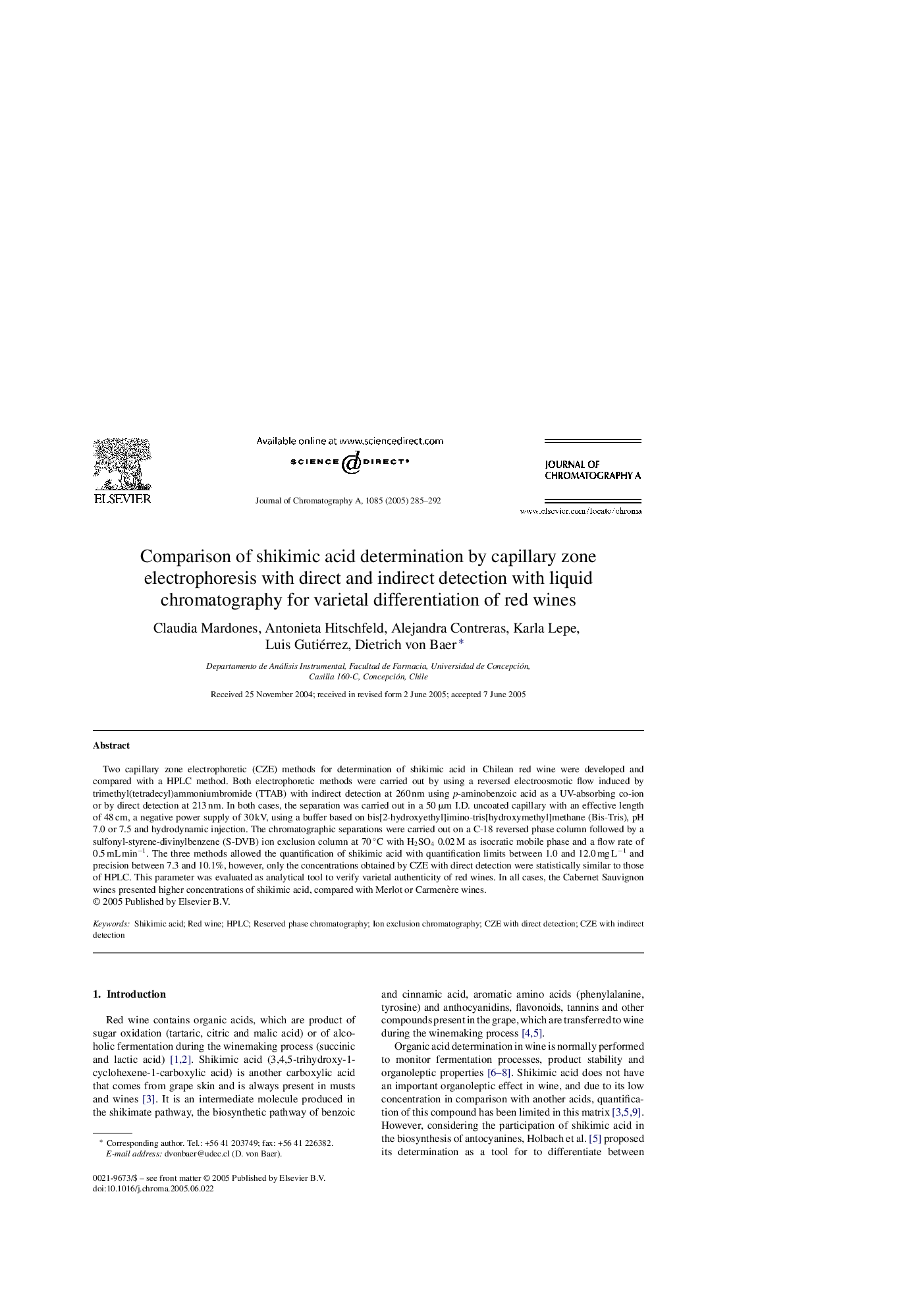| Article ID | Journal | Published Year | Pages | File Type |
|---|---|---|---|---|
| 10547915 | Journal of Chromatography A | 2005 | 8 Pages |
Abstract
Two capillary zone electrophoretic (CZE) methods for determination of shikimic acid in Chilean red wine were developed and compared with a HPLC method. Both electrophoretic methods were carried out by using a reversed electroosmotic flow induced by trimethyl(tetradecyl)ammoniumbromide (TTAB) with indirect detection at 260 nm using p-aminobenzoic acid as a UV-absorbing co-ion or by direct detection at 213 nm. In both cases, the separation was carried out in a 50 μm I.D. uncoated capillary with an effective length of 48 cm, a negative power supply of 30 kV, using a buffer based on bis[2-hydroxyethyl]imino-tris[hydroxymethyl]methane (Bis-Tris), pH 7.0 or 7.5 and hydrodynamic injection. The chromatographic separations were carried out on a C-18 reversed phase column followed by a sulfonyl-styrene-divinylbenzene (S-DVB) ion exclusion column at 70 °C with H2SO4 0.02 M as isocratic mobile phase and a flow rate of 0.5 mL minâ1. The three methods allowed the quantification of shikimic acid with quantification limits between 1.0 and 12.0 mg Lâ1 and precision between 7.3 and 10.1%, however, only the concentrations obtained by CZE with direct detection were statistically similar to those of HPLC. This parameter was evaluated as analytical tool to verify varietal authenticity of red wines. In all cases, the Cabernet Sauvignon wines presented higher concentrations of shikimic acid, compared with Merlot or Carmenère wines.
Related Topics
Physical Sciences and Engineering
Chemistry
Analytical Chemistry
Authors
Claudia Mardones, Antonieta Hitschfeld, Alejandra Contreras, Karla Lepe, Luis Gutiérrez, Dietrich von Baer,
